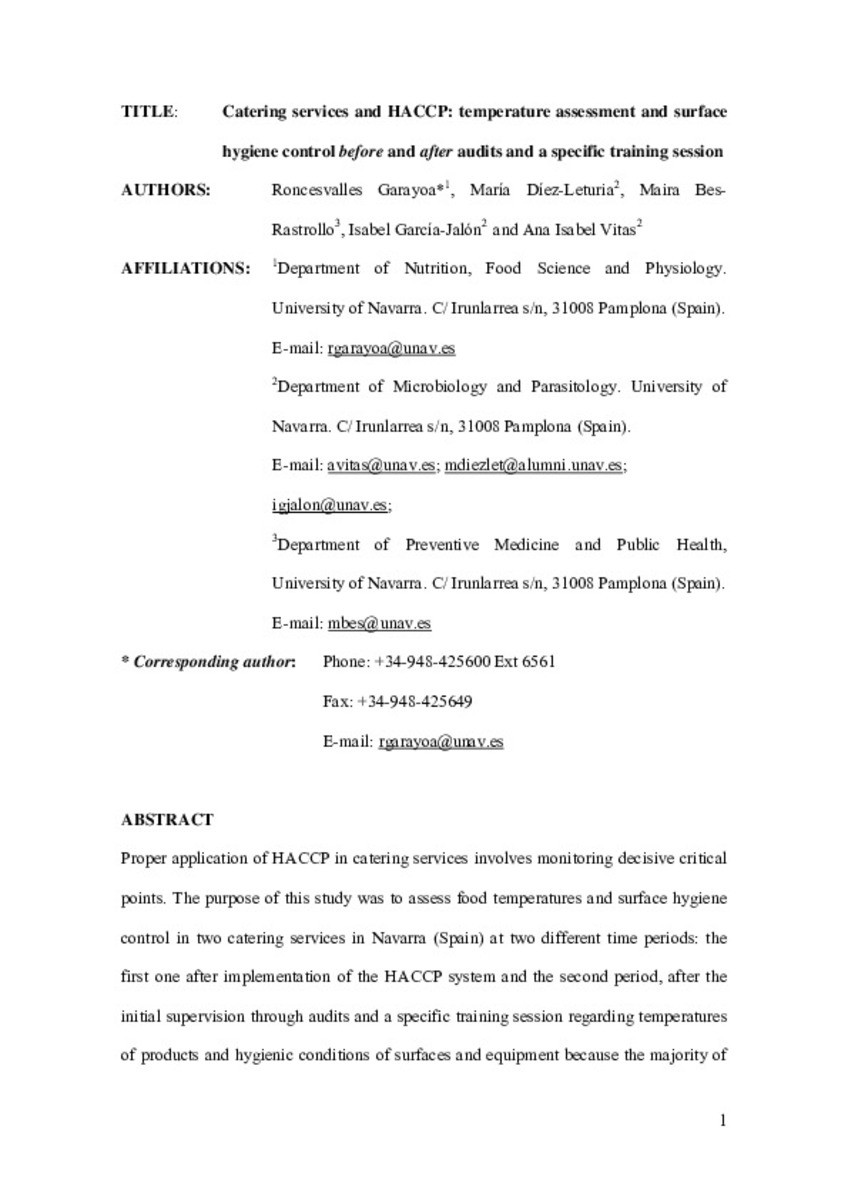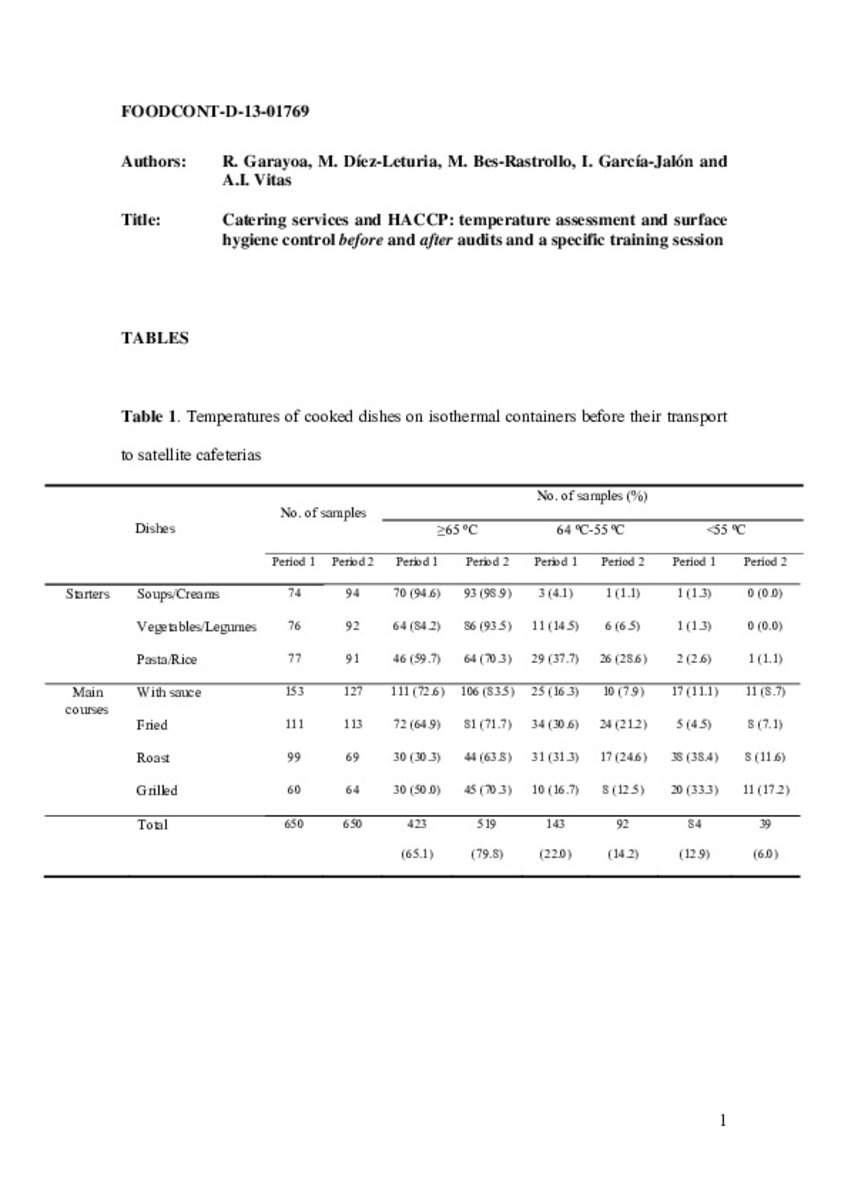Catering services and HACCP: temperature assessment and surface hygiene control before and after audits and a specific training session
Palabras clave :
Catering
HACCP
Food safety
Temperatures
Surfaces
Fecha de publicación :
2014
Cita:
Garayoa R, Díez-Leturia M, Bes-Rastrollo M, García-Jalón I, Vitas A.I. Catering services and HACCP: temperature assessment and surface hygiene control before and after audits and a specific training session. Food Control Sept 2014;43:193–198
Aparece en las colecciones:
Estadísticas e impacto
0 citas en

0 citas en

Los ítems de Dadun están protegidos por copyright, con todos los derechos reservados, a menos que se indique lo contrario.








